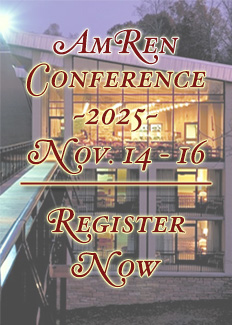The Land Beneath This Stadium Once Was Theirs. They Want It Back.
Jesus Jimenez, New York Times, May 7, 2023
Standing less than a mile from Dodger Stadium on a recent Saturday afternoon, Vincent Montalvo could hear the roar of the crowd inside the ballpark.
{snip}
It has been more than 30 years since he has stepped inside Dodger Stadium. His father took him to the ballpark when he was a child in the 1980s during “Fernandomania,” the craze surrounding the star Mexican pitcher Fernando Valenzuela.
But the seemingly harmless act of attending that game deepened a wound that has festered in the Montalvo family and the city’s Latino community. Reckoning with that hurt has been a challenge for the Dodgers as the team has tried to maintain a balance between acknowledging it and broadening the team’s widely Latino fan base.
Long before the Dodgers won their first World Series at Dodger Stadium in 1963 and Sandy Koufax tossed the team’s first perfect game in 1965, the land the ballpark was built on was home to hundreds of families living in communities called Palo Verde, La Loma and Bishop.
Those neighborhoods and their residents were displaced in the 1950s by the city of Los Angeles, citing plans to build affordable housing. But eventually the land was given to the Dodgers to build a ballpark after the team moved to the city from Brooklyn in the late ’50s. The area is now commonly called Chavez Ravine, a term that has become synonymous with Dodger Stadium.
Montalvo’s grandfather and grandmother were born and raised in Palo Verde. Even though Montalvo’s father didn’t know that before going to that game in the ’80s, Montalvo’s grandfather resented that they visited the ballpark that had replaced his neighborhood.
“We never went back,” Montalvo said.
The story of this displacement has been well documented in books, news articles and videos. But in recent years, descendants of marginalized communities in California have had success seeking reparations for land that was taken from them, in the form of money or the return of land. Spurred by that momentum, the descendants of the three Los Angeles communities see a chance to seek their own justice. The land on which Dodger Stadium was built, they say, should be returned to them.
{snip}
Montalvo and Arechiga met in 2018 and founded Buried Under the Blue, a nonprofit organization that seeks to raise awareness about the history of the displacement of the residents of Palo Verde, La Loma and Bishop.
As so-called land-back movements have gained momentum, Montalvo and Arechiga have been working to define what reparations mean for them and how to get them.
“We know we’re going uphill,” Montalvo said. “But we also know this: There’s a time right now in politics, both up and down the state, about reparations.”
Those seeking reparations in California have been encouraged by the story of Bruce’s Beach, a property that was bought by a Black couple, Charles and Willa Bruce, in 1912 in what would become the city of Manhattan Beach, Calif. The land was taken from the Bruces in 1924 when city officials condemned it through eminent domain, claiming to need it for a public park.
Last year, the Los Angeles County Board of Supervisors voted to transfer ownership of the land to the great-grandsons and great-great-grandsons of Charles and Willa Bruce. They sold the land back to the county for $20 million.
Buried Under the Blue and the descendants of those who were displaced have political support, including from Eunisses Hernandez, a member of the Los Angeles City Council who said she stands with them.
{snip}
Leaders of Buried Under the Blue have also met with the descendants of Indigenous tribes that once lived in the Los Angeles Basin. In a true land-back effort, they say, land should be returned to the Indigenous groups who were the first occupants.
“There can’t be true land-back without the Indigenous people first,” Arechiga said.
{snip}
Walking into Dodger Stadium these days, fans are almost instantly met with the sound of Spanish in several forms.
There are fans speaking Spanish, others Spanglish. Julio Urías, a Dodgers pitcher from Mexico, takes the field to “Soy Sinaloense” — I’m Sinaloan — by Gerardo Ortiz. Throughout Dodger Stadium, fans sport “Los Dodgers” jerseys and shirts, and restrooms and other parts of the ballpark are labeled in English and Spanish.
The Dodgers built their Latino fan base, one of the largest in Major League Baseball, partly through their long history of fielding Latino players, including Valenzuela and Adrián González.
Creating that Latino support, however, took time after the displacement of so many Mexican American families in the late 1950s. Adrian Burgos, a University of Illinois professor who teaches about race, sports and society, said pushing out local residents “set up a very bad relationship between the Mexican American community and the Dodgers.”
“It really doesn’t change much till Fernando,” Burgos said, referring to Valenzuela. “He began to make it OK for Mexicanos to root for the Dodgers.”
{snip}
The Dodgers also brought in the first full-time Spanish-language broadcast in M.L.B. under announcer René Cárdenas, who was joined by Jaime Jarrín.
{snip}
Since the 1980s, the Dodgers have continued to grow their Latino fan base with help from players like Urías, who was on the mound for the final out of the team’s 2020 World Series win.
But the team, which did not comment for this article, has still wrestled with how to make amends with displaced residents and their descendants.
In 2000, team officials, including former President Bob Graziano, joined former residents and their families for a ceremony at a church. The Los Angeles Times reported that one former resident even hugged Graziano at the ceremony, and they took communion together.
{snip}
















